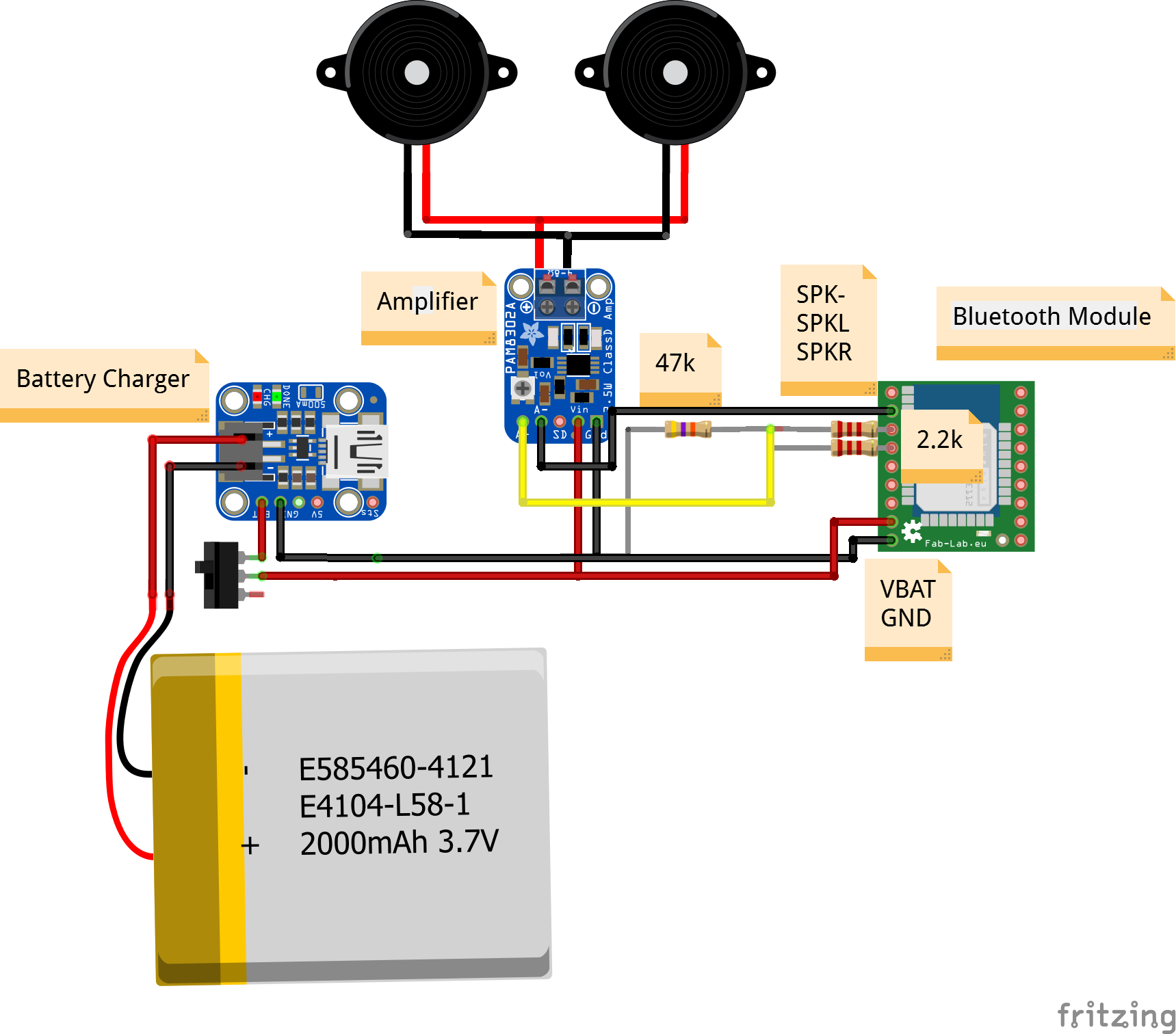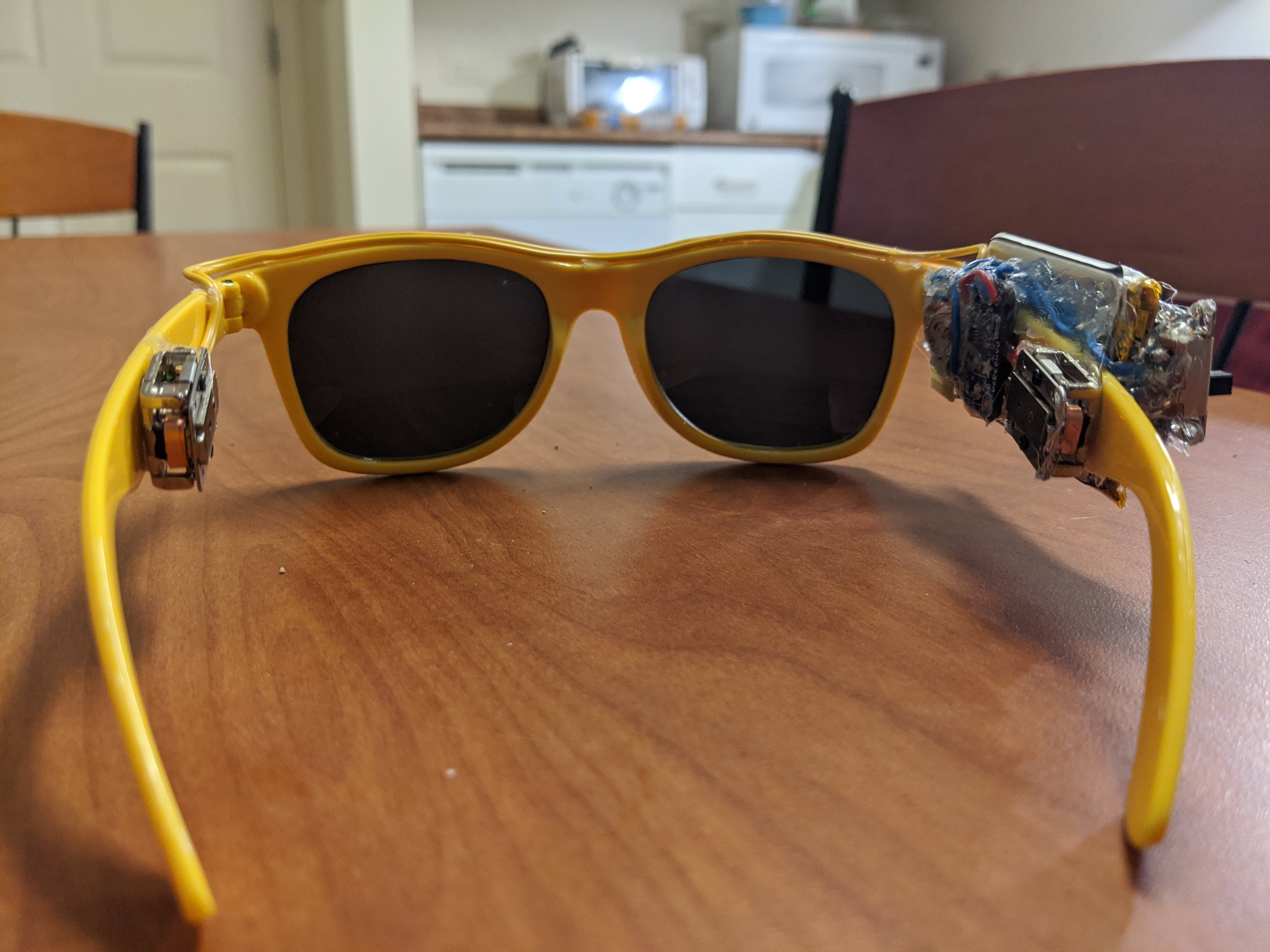Bone Conduction Sunglasses
OVERVIEW
This project sets out to tow the line between Function and Style. If you’re familiar with Bone Conduction headphones, I basically took some of those and slapped them on a pair of sunglasses. Bone Conduction headphones work by placing small surface transducers on your skull and vibrating your bones to transmit sound into your eardrums instead of by air. Because sunglasses are already up in your face area, it was pretty simple to place the transducers in a place that would be effective.
LIMITATIONS & Challenges
Going into this project, I wasn’t too familiar with how I was going to connect the sunglasses to a normal phone or audio playing device. I had never worked with Bluetooth-enabled devices before, so I was a bit hesitant. As I ended up finding an integrated chip with Bluetooth, it was much easier to integrate than I thought it would be.
LINKS:
GAME PLAN
Firstly, I think it’s useful to get an overview of how normal headphones work before jumping in with how these headphones function specifically. When you hear a sound in your brain, it’s because something made your ear drum wiggle a bit. That’s all sound is, a wiggly ear drum. There’s lots of ways one could wiggle an ear drum, but the most common way we encounter is by air. When wiggly air touches your ear drum, some of that wiggly-ness gets passed on. In the same way that if I wiggle a boogie board in a pool, the water wiggles in return. Air wiggles because things are vibrating. When you speak, your vocal cords are vibrating. This, in turn, vibrates the air around them, which then vibrates people’s ear drums, and that’s how they hear the sound of your voice.
So, normal headphones work by taking in an electrical vibration (some voltage signal), applying it to a transducer (a speaker), vibrating the air around them, which finally vibrate your ear drum to make sound in your brain. The difference here with Bone Conduction, is just what’s in the name. Instead of vibrating the air around the transducer, Surface transducers are really good at vibrating surfaces. This could be a table, the bottom of a cup, or even part of your skull. Because the surface transducer is attached to your skull, and your skull is attached to your ear drum, the vibrations travel their way through your body and make sound in your brain. How neat is that!
So, how did I build the whole thing then? Well, the wiring for this project is pretty simple:
There’s really only two important boards here: (1) The Amplifier, and (2) The Bluetooth Module. The Bluetooth module is what connects to a phone and receives the input signal. When paired like any normal bluetooth device, you can send music, phone calls, or whatever you want across that connection. The signal produced by the bluetooth module is then sent to the amplifier board. The amplifier takes the power from the battery and sends it to the surface transducers.
One thing to note is that the signal coming out from the bluetooth module is stereo sound meaning different sounds can come in from both sides, while the amplifier board is a mono sound. This means that it can only accept one signal at a time to boost. Because of this mono amplifier, I needed to join the stereo signal coming from the board into one channel. That is what the two 2.2k resistors are doing.
Lastly, the only thing left to do, was to put it all together and play some tunes. This was actually more difficult than it might seem because of the intricacies of all the parts and the small mounting space. I ended up hot-glueing the parts to the edge of some sunglasses and routing the wire across the frame. I think it ended up okay, but nothing clean.




